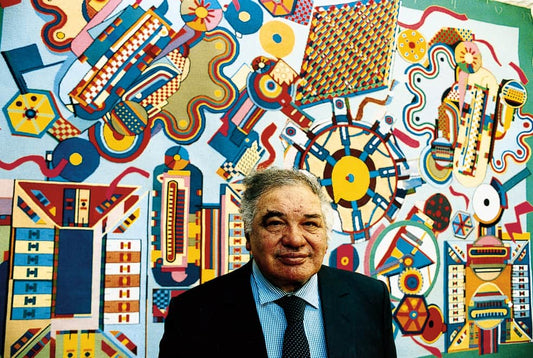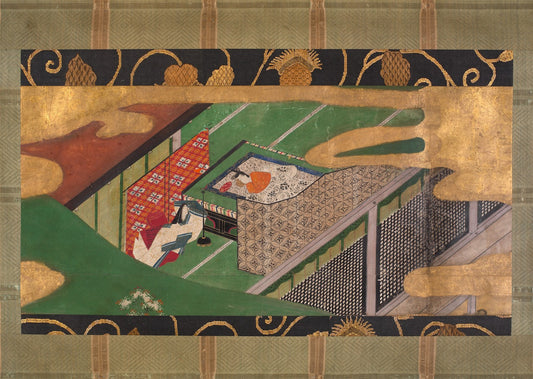The Power of a Kiss
A kiss is one of the most natural ways people show affection to their lovers. On Valentine’s Day specifically, kisses are seen and advertised in movies, cards, candies, and famous love stories like Romeo and Juliet. Additionally, literary comparisons such as classical fairy tales, Snow White and Sleeping Beauty, focus on the power of kissing to break a curse and bring the leading lady and prince together. The act and power of a kiss carry on into art history. Artists Roy Lichtenstein, Rene Magritte, Antonio Canova, and Henri de Toulouse-Lautrec have crafted a passionate kiss in their art. Although each artist uses a different art form, they all focus on the power of a kiss. In honor of Valentine’s Day, this analysis will celebrate historical art pieces that capture a passionate kiss between lovers, which we acknowledge and celebrate every year on Valentine’s Day. As viewers and lovers of art history, we’re all captivated by a passionate kiss.

Between 1787 and 1793, Antonio Canova sculpted a marble statue called Cupid and Psyche. He was known for crafting prominent sculptures of characters from Greek Mythology. The statue is currently in the Louvre Museum in Paris. The sculpture is Neoclassical, and it’s based on the famous Greek tale of Cupid and Psyche, two famous Greek mythology characters. Cupid and Psyche are embracing in a kiss. Cupid himself signifies love, and Psyche herself is the soul.
“Cupid, lover of the mortal Psyche, forbids her to cast eyes upon him and visits her only at night. Disobeying him, Psyche holds a light over his sleeping body, for which she is punished by Aphrodite. The scene conveyed by this modello is of Psyche being rescued in Cupid's embrace.”
Cupid kisses Psyche, bringing her back to life. Although his original intention was to have Psyche, as his mother Aphrodite ordered, to “fall madly in love with the ugliest being in the world.” Instead, Cupid fell madly in love with Psyche, which Canova conveyed through a kiss in his sculpture.

Later, during the nineteenth century, in 1892, French painter Henri de Toulouse-Lautrec created various paintings focusing on couples in bed. We’re going to focus on his painting In Bed, The Kiss. Subsequently, In Bed, The Kiss depicts a couple in bed embracing one another. Their arms are wrapped around one another as they share a passionate kiss, and their eyes are closed. The detail Toulouse-Lautrec offers is true and honest to what we consider love and passion. The couple has a lot of passion for one another because they’re only focused on one another, nothing else. Unlike Canova’s sculpture, there’s no narrative behind Toulouse-Lautrec’s painting. Rather, he offers art centering on a couple's emotional connection.
“The composition and subject matter provide a view into the private moments of human connection, presenting an unguarded and delicate scene that demonstrates the artist’s profound knowledge of human emotions.”
We’re given insight into this couple’s private life. The image of them alone in bed presents a sense of vulnerability between two people. We’re given an image of one of the best human experiences tied with a kiss.

In 1928, a Belgian surrealist artist, Rene Magritte, painted an oil on canvas called The Lovers II. His painting is unique because he depicts a couple embracing in a kiss. The act of kissing is visible, but the faces of the couple aren't. Instead, their faces are covered with a veil and cloth. Interestingly, we don't see the actual faces of the couple, so we can only wonder if they even have faces or if there's something more to be said about them. What is Margritte trying to convey here? Yet, if we look at the couple's faces, Magritte indicates their gender by their exposed shoulders and body types. The figure on the left is a man dressed in a suit, and the figure on the right is a woman wearing a red dress with some of her right shoulder exposed. Like Canova and Toulouse-Lautrec, Magritte centers on a couple sharing a passionate kiss. However, he provides a different tone with his use of melancholy colors, such as gray, white, and black, which surround the couple. Like a true surrealist artist, he leaves us guessing with this avant-garde image.

In 1964, Roy Lichtenstein, an American pop artist, created a painting known as We Rose Up Slowly. The pop art movement dominated the art world in the 1960s and 1970s. Thus, Lichtenstein took the initiative of taking simple images and popping them up with bold and bright colors. Miraculously, We Rose Up Slowly itself stretches over two panels, showing a headshot of a man and woman. They’re holding each other passionately, and their eyes are closed. The painting is in color and is considered pop art. In addition, to further emphasize the “pop” in the art, Liechtenstein offers a quote on the left-hand side. The quote reads, “We rose up slowly as if we didn’t belong to the outside world any longer…like swimmers in a shadowy dream…who didn’t need to breathe…” We’re aware of the painting’s title through this quote, which offers insight into a couple who belong elsewhere than the world they’re currently in. Rather, this couple is in their own world they’ve created together. Unlike Magritte's painting, we can see the faces of the couple in Lichtenstein’s painting, whom he surrounds in a dream sequence background with bright colors.
Roy Lichtenstein, Rene Magritte, Antonio Canova, and Henri de Toulouse-Lautrec each offered their unique perspectives on the profound impact of a kiss. Commonly understood as a gesture of affection that passionately unites individuals, a kiss has long been a symbol of love witnessed and shared by couples, especially celebrated during Valentine's Day. These artists, however, have played a pivotal role in depicting the genuine connection and vulnerability inherent in a kiss from someone dear.
©ArtRKL™️ LLC 2021-2024. All rights reserved. This material may not be published, broadcast, rewritten or redistributed. ArtRKL™️ and its underscore design indicate trademarks of ArtRKL™️ LLC and its subsidiaries.





